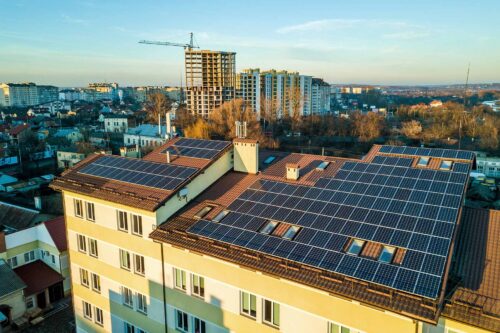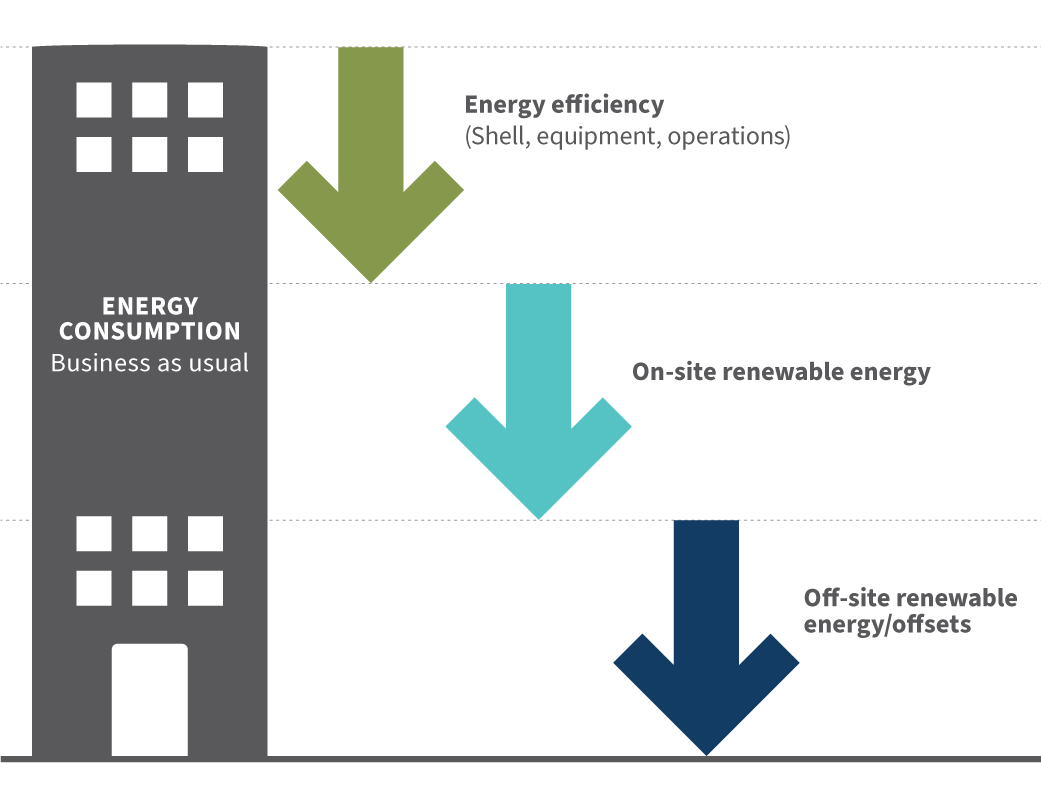
How Renewable Energy Can Revolutionize India’s Real Estate Sector
Exploring renewable procurement strategies for developers, building owners, and tenants.
Carbon emissions linked to the built environment comes mostly from the use of electricity. Lodha, one of the largest real estate developers in India, is addressing this through innovative ways to transition their buildings to 100 percent renewable energy.
Real estate users and their emissions
The Greenhouse Gas Protocol has established standardized frameworks to measure greenhouse gas (GHG) emissions, categorizing them into 3 scopes:
- Scope 1 – Direct GHG emissions occur from sources that are owned or controlled by the company (mainly fuels, refrigerants, etc.).
- Scope 2 – Indirect GHG emissions account for emissions from the generation of purchased electricity consumed by the company. They are called indirect as these emissions physically occur at the facility where electricity is generated.
- Scope 3 –These emissions are a consequence of the activities of the company, but occur from sources not owned or controlled by the company. These emissions occur in the upstream and downstream value chain of a company, and usually represent the majority of a real estate developers’ overall GHG emissions. Within Scope 3, categories 11 and 13 account for electricity usage by an end-user (owner or tenant) of any real estate.
To achieve net-zero emissions, we must generate the electricity for these categories with renewable energy (RE). This will also support the ambitious commitments that Indian Prime Minister Narendra Modi made during COP 26 including:
- India achieving net-zero emissions by 2070
- Transitioning 50 percent of India’s cumulative electric power installed capacity to non-fossil fuel-based energy resources
- Reducing the emissions intensity of economy by 45 percent from 2005 levels by the end of this decade
Integrating renewable energy in a development or a process depends on many factors; the right choice of deployment is essential for sustainability and consistent economic benefits for the organizations and customers. While there are a host of options available, there are certain key factors that need to be considered while deploying renewables. These include:
- Goal: What is the net-zero goal for which deployment is required?
- Ownership: Who will own the plant: the user or the developer?
- Location: Where will the plant be located: on-site or off-site?
- Regulations: will evolving regulations impact the tenure of the deployment?
- Energy demand and its consistency: Is there a good understanding of present and future demand load?
- Pricing and terms and conditions: What are the budgetary implications and constraints with respect to deployment?
Transforming electricity use for different users in the real estate sector
Real estate developers
Lodha is transitioning completely to renewable energy to make its Scope 2 emissions zero. Its RE deployment approach will utilize on-site and off-site RE deployment pathways for construction loads, its owned offices, and downstream leased assets through net metering, the Green Tariff mechanism, and open access, which allows large electricity consumers (with loads greater than 1 megawatt) to buy relatively cheaper power from power producers.
Since most of Lodha group’s loads do not currently qualify for the open access limit of 1 MW, the company has initiated RE procurement through the green tariff mechanism. The recent “Green Energy Open Access” rules notified by the Ministry of Power provide hope in this regard, since they bring the threshold of contracted demand down to 100 kW from the earlier 1 MW. This will allow a much larger pool of electricity consumers to procure renewables through open access.
Lodha also aims to adopt renewables through round-the-clock (RTC) purchase options that will help ensure that it meets its demand with RE generation throughout the day. The RTC mechanism does so by tapping into diversified renewable energy sources to overcome the variability of a single source.
Lodha is also exploring virtual power purchase agreements (VPPAs) as a mechanism to contract renewable energy with independent power producers (IPPs). Although the physical delivery of power does not occur under a VPPA, the consumer receives renewable energy attributes (or green energy credits) by procuring power from the IPP via the power exchange at the market price. The potential benefit for the consumer here is that if the market rate is higher than the pre-agreed VPPA contract price, the IPP pays the difference to the consumer.
Owner’s co-operative societies
The terraces in high-rise buildings are already occupied by various services, and the remaining rooftop is used up by solar systems to cater to the common area loads of the respective buildings. Residential high rises up to a certain height (20–25 stories), typically have enough roof space to completely power common areas with renewable energy, aided by the banking facility under net metering. The societies can even take advantage of green tariffs to completely offset the GHG footprint of their common area. There was a time when RE developers hesitated to engage with housing societies, considering them to have low creditworthiness. However, the ever-increasing proliferation of rooftop solar systems makes this issue less of a concern.
Residential owners or tenants
In addition to the lack of rooftop space in many high-rise buildings, there are limited avenues to engage in off-site contracts or purchase options for a typical apartment owner. Further, direct purchase of renewable energy via green tariffs requires customers to pay a premium per unit of electricity consumption, which may act as a deterrent.
Lodha continues to search for feasible solutions that can resolve this issue at scale and at prices for its customers where they do not have to pay a premium. One of the options is community solar, which is facilitated through virtual net metering. While regulations in certain jurisdictions allow this model, it is still not permitted in others. By engaging with distribution companies (discoms) and regulators, Lodha hopes to create RE deployment opportunities for communities.
Commercial tenants
Tenants in commercial buildings have short- to medium-term tenures, and face similar challenges as residential tenants. However, they can afford to pay a slight premium by switching to a green tariff to align their energy needs with their own decarbonization commitments or goals. Sometimes their loads are also higher than 1 MW, in which case they can opt for the open access route. For certain tenants, like industrial or warehousing, there is enough space on the roof to enable the customer to switch completely to renewable energy through net metering.
As a responsible real estate landlord, Lodha creates awareness about greening opportunities and also ask tenants to make the switch to renewables. The company also explains to its tenants that the per unit energy savings being passed on to them are higher than the premium any greening option like a green tariff may require.
Real estate developers can also explore green leases in which the electricity charges are included as part of the rent. As a next step, the company can become an integrated energy services provider (IESP) — a third-party developer that owns and operates the energy asset behind the meter, and acts as a utility to tenants, within the guidelines of applicable regulations.
Alternatively, corporate buyers can tap into the open market to meet their green electricity needs. The green term-ahead market (GTAM) is a market-based mechanism that allows RE developers and corporate buyers to trade green power in the open market on an intraday, day-ahead, daily, and weekly basis, without signing any long-term power purchase agreement.
Buyers may also opt to purchase renewable energy credits (RECs) to fulfill their renewable purchase obligations and offset emissions. RECs are traded on the power exchange and represent the green attribute of electricity generated from RE sources.
The net-zero goal requires complementary actions
Real estate developers and other users can explore the various pathways and options discussed above to offset the emissions from their electricity demand.

This includes adopting renewable energy along with complementary innovative energy-efficient solutions available in building design, including passive design and equipment efficiency. This gamut of solutions can go a long way in accelerating the journey toward a net-zero future.